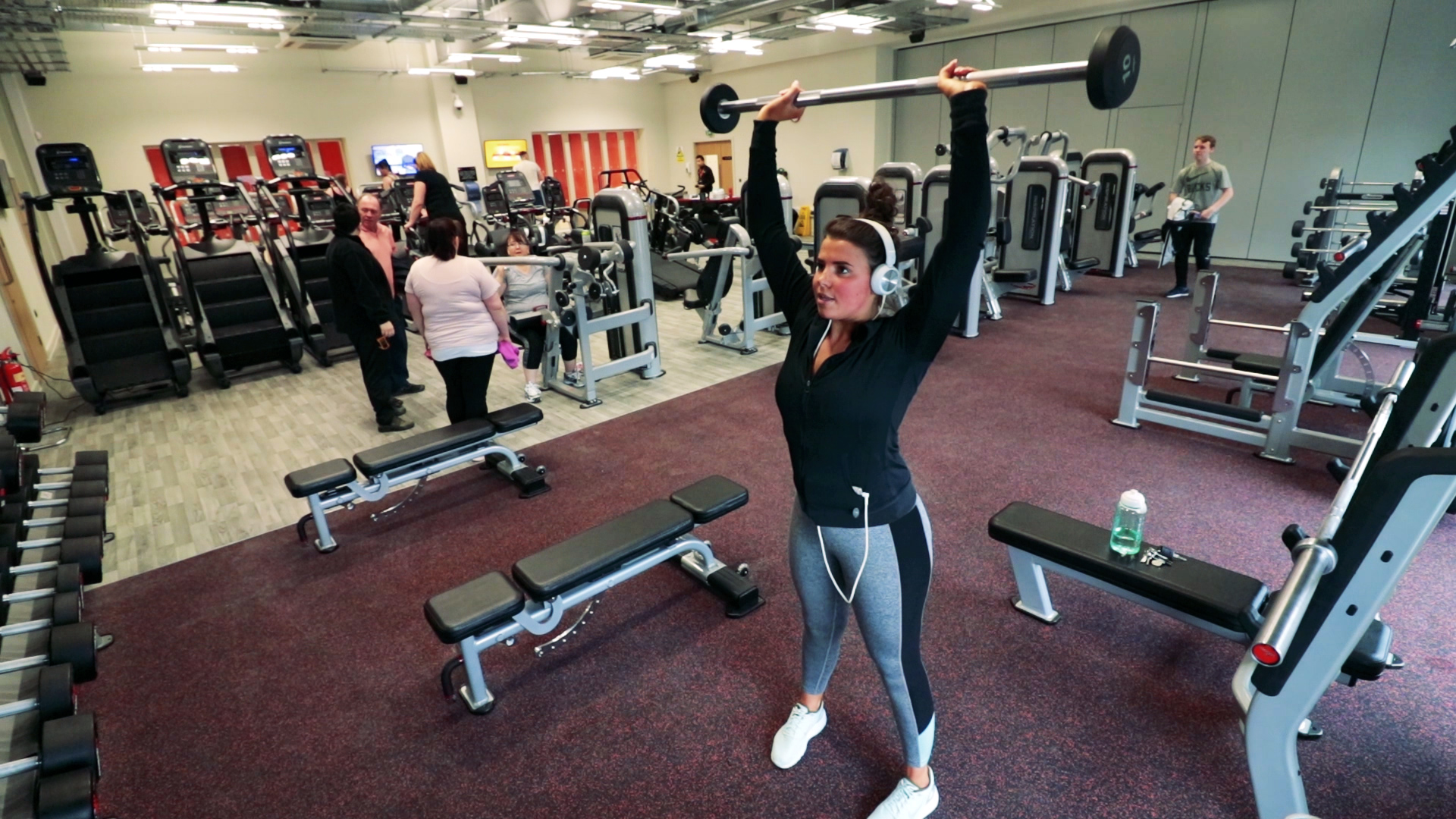When someone says ‘weightlifting’ what do you see? Sweaty, muscle-bound ‘bros’ grunting in front of mirrors in the gym? That might have been the weightlifting of old, but with movements like #strongnotskinny (or #strongisthenewskinny), many more people are beginning to build strength and weight training into their exercise routine, especially women.
Weighty issue
Strength is important for all of us – from children to the elderly. And that doesn’t mean Olympic weightlifter strong; we need strength to simply stand up and walk without falling over – something that gets more and more important as we age. As we get older we lose muscle mass and bone density, which makes us weaker, frailer and more likely to fall over and break something (one of the leading causes of injury and death in older people).
As we lose strength the everyday actions we take for granted become difficult – picking up the baby off the floor, using the stairs, carrying shopping, getting out of bed – but weights and strength training makes all of that much easier. However, this doesn’t mean it’s just for the older generations – it’s important no matter what age you are.
Why weights?
Many people are put off lifting weights, thinking it will make them bulk up like the hulk, or that it’s boring just ‘pumping iron’ in front of the mirror. But weightlifting and strength training doesn’t mean lifting super heavy barbells, there are lots of interesting ways to add weight training and strength into your exercise routine.
Certain types of weight training will increase your overall strength, some will strengthen specific areas of your body and some will help build endurance. By knowing the different types of training, you can pick the ones that suit you and your family’s needs the best.
Weight training and strength will also help you lose weight (yes, lose weight), improve blood flow and build a stronger heart, increase bone density (so you’re at less risk from osteoporosis), and it also helps with balance and co-ordination. If you’re a runner, cyclist, dancer, climber or play sports, these types of training will also give you more endurance and better form.
Barbell lifting
This is the ‘traditional’ image of weightlifting we all have, otherwise known as powerlifting – holding a long bar between two hands and squatting, deadlifting (holding above your head), bench pressing or shoulder pressing. Whilst it may look intimidating it’s a great way to watch as your strength progresses and helps both men and women gain confidence in their own abilities. Don’t worry, you’ll start with just the bar first, or even just getting used to the positions, before you add any weights.
Isometric training
Isometric training is used to build strength and stamina in the positions you hold. During training you will hold a weight in set positions for a given amounts of time – for example a dumbbell held to your side at shoulder height for sixty seconds. It’s great for people like climbers and gymnasts, but also helps build good, healthy muscles for use in everyday life.
Kettlebells
Kettlebells look like cannonballs with handles. When used correctly they’re an extremely effective tool for building strength and muscle conditioning. Many people prefer to take a kettlebell class or train with a personal trainer initially to make sure they master the moves properly. Kettles are a great way to build strength and fluidity in movement.
Circuit training
This is a type of training where you undertake a number of exercises in quick succession. Circuits don’t have to include weights; however, many do, especially small dumbbells or weight plates. In combination with plyometric exercises (jump training), this is a great way to build body strength – and can be a fun way to get fit quick.
Bodyweight exercises
These are exercises that don’t rely on any kit to get you strong, you just use your own body weight. Many exercise and circuit classes incorporate bodyweight exercise into their routines – exercises like step-ups, burpees, hip bridges, lunges, planks, push-ups and squats are common.
Getting the kids involved
Whilst little kids (those under the age of about thirteen) don’t have the skeletal or hormonal balance to lift weights, kids can start strength training from an early age. It will help keep them healthy and with their co-ordination as they grow. It’s recommended that between the ages of five and eighteen children should do activities that help build strong muscles three times a week. Concentrate on bodyweight exercises and do them as a family – it’s a great way to spend time together and sets a good example.
Fitting exercise in
You can begin to feel the benefit from just thirty minutes of strength and weight training a week, which is how long many classes last. If you’re finding it hard to get out to a class or a gym, why not do some bodyweight exercise at home? Or buy some dumbbells to use with online videos. There’s no excuse not to incorporate a little into your everyday life, and you’ll thank yourself as you get older.
Age is no barrier
It’s recommended that adults over fifty do light strength and weight training exercises three times a week to help protect against age-related muscle and bone loss. If you haven’t exercised much before, speak to your GP or a qualified exercise coach/personal trainer at your local gym. And there’s nothing to say you can’t become a powerlifter post sixty!

